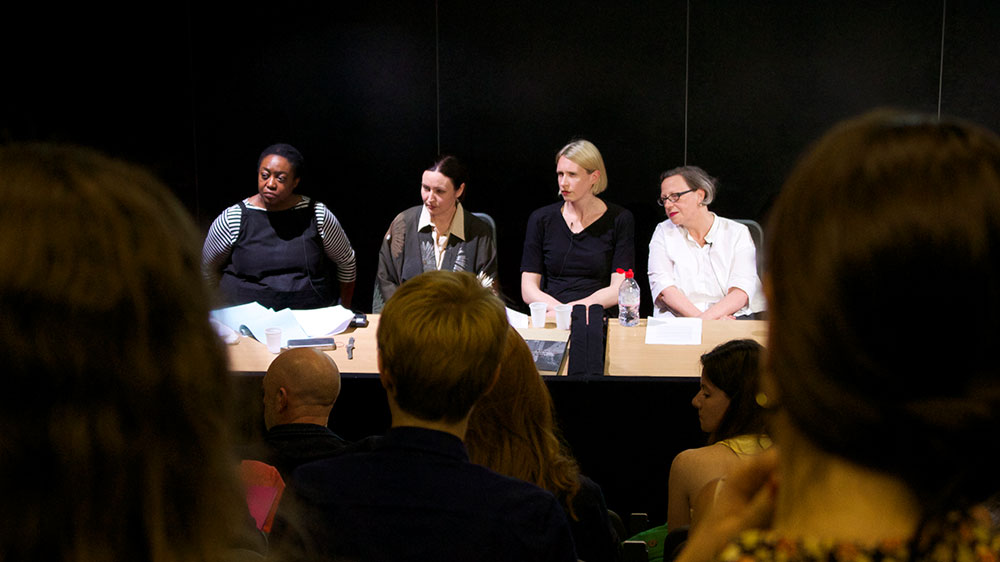Chaired by Carol Tulloch (UAL Senior Research Fellow in Black Visual Culture), The Centre for Fashion Curation launched with a debate in which panellists discussed the issues and preoccupations surrounding the development of fashion curation as an academic discipline.
Each curator began the evening with a brief introduction to themselves and their work, and on the panel were an exciting collection of industry professionals and academics including: Shaun Cole (Course Director of MA History and Culture of Fashion); Amy de la Haye (V&A Curator and MA Fashion & Curation tutor); Alison Moloney (Curator); Professor Claire Wilcox (Chair in Fashion Curation, V&A Curator); Professor Judith Clark (Curator and MA Fashion & Curation tutor); and Jane Holt (LCF Archivist) – all of whom are members of LCF’s new Centre for Fashion Curation.
The debate focused on a discussion of the predicaments curators are faced with around the definition of ‘curation’. Amy suggested the word ‘curation’ is used too flippantly, giving the example of someone implying they ‘curate shop windows’. Shaun agreed, explaining that the term ‘curation’ is now being used to define such a variety of things that we’ve previously done for years without thinking about it, meaning we’re always trying to redefine what it involves.
Furthermore, the panel was in agreement over the interesting factors involved in curating and archiving fashion. Amy commented that the unique nature of fashion is seen in the way that we mark our clothes; physically changing them, making them truly our own. Additionally, Jane, while referencing the LCF archive, pointed out that these unique and personal factors in someone’s clothes mean that each individual garment tells an exciting story.
Judith indicated that the role of the curator was also to stage ‘objects’ in a meaningful way, so that the story is available to the viewer:
‘Staging these objects in a way which means the viewer might think differently about that object – or be inspired by that object, it’s about inspiration ideally. The viewer will have a new thought about this object.’
Similarly, Claire explained, the curator needs to be aware of the language used in his or her object descriptions, since the descriptive words used at a certain time reflect the current understanding and appropriation of an object:
‘The language we use in the V&A is very carefully managed, every word is carefully picked and subjectivity is very much avoided. It’s a huge endeavor to treat what we say about objects and what we understand about objects, using our own tongue, for future generations.’
At the end of the discussion, Carol Tulloch had the difficult task of summarising what ‘curation’ means. Carol did so by drawing on some of the shared opinions from the panel, and completed the discussion with this definition:
‘Curating is a space to think, a space of enrichment, enlightenment and, last of all, passion.’
- The Centre for Fashion Curation
- The Fashion Space Gallery
- Words by Olexandra Solomka, MA History and Culture of Fashion
- Photography Rima Musa


